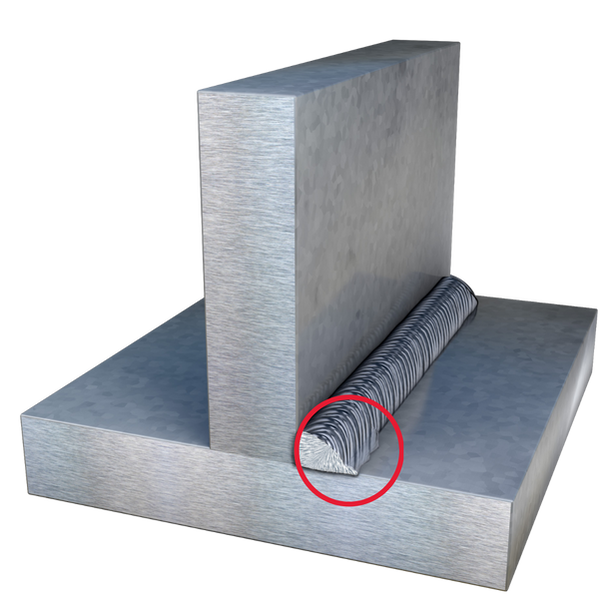Grasping the Art of Welding: Exactly How to Prevent Undercut Welding Issues for Flawless Manufacture Outcomes
By understanding the root causes of undercut welding and carrying out effective methods to stop it, welders can elevate their craft to brand-new degrees of quality. In the pursuit of flawless construction outcomes, mastering the art of welding to prevent undercut issues is not simply a skill yet a need for those aiming for perfection in their job.
Recognizing Undercut Welding

To stop undercut welding, welders should make certain appropriate welding specifications, such as readjusting the current, voltage, traveling speed, and maintaining the appropriate electrode angle. In addition, utilizing the proper welding strategy for the particular joint arrangement is crucial. Using weaving movements or backstepping techniques can assist ensure correct weld metal deposition and reduce the possibility of undercut formation. Regular inspection of welds during and after the welding procedure is likewise critical to catch any undercut early and make needed changes to avoid more flaws. Preventing weld undercut. By comprehending the reasons for undercut welding and applying preventive procedures, welders can attain high-quality, structurally sound welds.
Causes of Undercut in Welding
Recognizing the elements that add to damage in welding is essential for welders to generate top quality, structurally audio welds. Undercutting occurs when the weld steel does not correctly fill up the groove formed in between the base metal and the formerly transferred weld steel. A number of variables can result in undercut in welding. One typical cause is excessive heat input. Welding at heats for extensive periods can cause the base metal thawing greater than preferred, leading to undercut. Inadequate welding present or inaccurate welding speed can additionally add to damage. Not enough current might not offer sufficient warmth to thaw the base and filler metals adequately, while excessive rate can protect against appropriate blend, creating undercut. Furthermore, improper electrode angles or incorrect lantern adjustment methods can create areas of low weld metal deposition, promoting undercut. Recognizing these reasons and carrying out proper welding strategies can help protect against damaging problems, making certain strong and resilient welds.
Methods to stop Undercutting

To alleviate the danger of damaging in welding, welders can employ critical welding methods intended at improving the quality and integrity of the weld joints. One effective approach is to change the welding criteria, such as voltage, present, and take a trip rate, to guarantee appropriate warmth input and deposition. Keeping an appropriate electrode angle and making sure regular traveling speed can also assist prevent undercut. In addition, making use of the appropriate welding technique for the details joint configuration, such as weave or stringer beads, can add to minimizing damaging. Preventing weld undercut.
Employing back-step welding methods and managing the weld grain profile can also aid distribute warm evenly and decrease the threat of undercut. Regular assessment of the weld joint throughout and after welding, as well as executing quality assurance steps, can help in spotting and dealing with undercutting problems immediately.
Value of Appropriate Welding Specifications
Picking and maintaining suitable welding parameters is crucial for achieving effective welds with minimal problems. Welding parameters describe variables such as voltage, existing, take a trip rate, electrode angle, and protecting gas circulation rate that directly affect the welding procedure. These specifications must be meticulously readjusted look at here based upon the kind of material being welded, its density, and the welding method employed.
Correct welding parameters make sure the correct amount of heat is used to melt the base metals and filler material uniformly. If the criteria are set too expensive, it can lead to extreme heat input, causing distortion, burn-through, or spatter. On the various other hand, if the specifications are too reduced, insufficient fusion, absence of infiltration, or undercutting might occur.
Quality Assurance in Welding Operations

Verdict
In verdict, grasping the art of welding requires a thorough understanding of undercut welding, its reasons, and methods to avoid it. By ensuring correct welding specifications and implementing quality control practices, remarkable fabrication outcomes can be accomplished. It is important for welders to continually pursue excellence in their welding procedures to Read Full Article avoid undercut concerns and produce high-grade welds.
Undercut welding, a typical defect in welding procedures, occurs when the weld steel doesn't effectively fill up the groove and leaves a groove or clinical depression along the welded joint.To prevent undercut welding, welders need to make sure proper welding criteria, such as adjusting the present, voltage, traveling speed, and keeping the correct electrode angle. Inadequate welding inaccurate or current welding speed can likewise add to undercut.To mitigate the threat of undercutting in welding, welders can employ calculated welding this page methods intended at boosting the quality and stability of the weld joints.In verdict, mastering the art of welding needs a thorough understanding of undercut welding, its reasons, and strategies to prevent it.